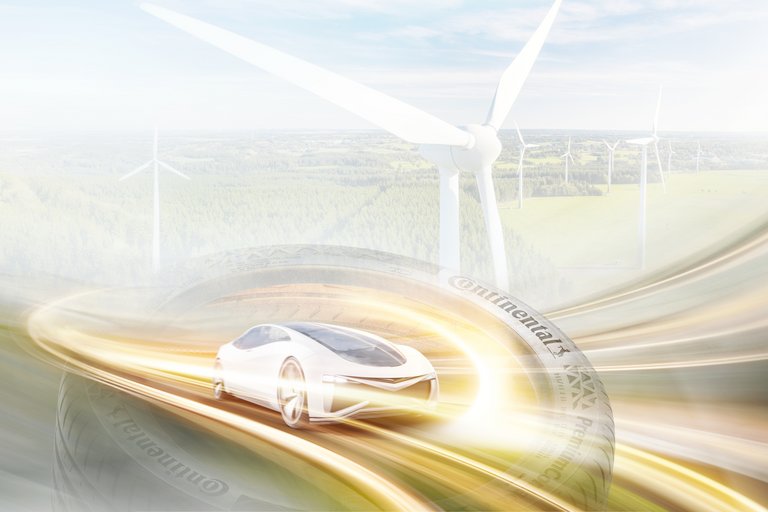Reporting and downloads
Since the publication of our first sustainability report for the business year 2011, we have published a sustainability report every year in which we describe the values and principles we act on and how we measure our sustainability performance.
Sustainability Report
Our 2024 Sustainability Report covers Continental management approaches on environmental, social, and governance sustainability matters. The sustainability report is now part of the annual report. Find it starting on page 95.
An overview of our previous reports and auditor’s reports can be found here.
Reports:
Reports:
Integrated sustainability report - pdf (7.73MB)
Auditor’s Reports:
2019
Sustainability report according to GRI - PDF (3.07MB)
2018
Sustainability report according to GRI - PDF (2.66MB)
Report on the audit of the consolidated financial statements and of the corporate management report
2017
Combined non-financial statement - PDF (285KB)
Sustainability report and UN Global Compact communication on progress - PDF (4.96MB)
2016
Sustainability report and UN Global Compact communication on progress - PDF (4.55MB)
2015
2015 sustainability report and UN Global Compact communication on progress - PDF (1.27MB)
Condensed version and special on the 2015 sustainability report 2015 - PDF (2.98MB)
2014
2014 sustainability report and UN Global Compact communication on progress - PDF (2.27MB)
2013
2013 GRI report and UN Global Compact communication on progress - PDF (1.95MB)
2012
2012 GRI report and UN Global Compact communication on progress - PDF (657KB)
2011
Principles
Code of Conduct (in 22 languages)
Code of Conduct (English) - pdf (1.53MB)
Code of Conduct (German) - pdf (2.61MB)
Code of Conduct (Brazilian Portuguese) - pdf (1.54MB)
Code of Conduct (Czech) - pdf (1.54MB)
Code of Conduct (Dutch) - pdf (9.16MB)
Code of Conduct (French) - pdf (1.55MB)
Code of Conduct (Hungarian) - pdf (1.55MB)
Code of Conduct (Italian) - pdf (2.60MB)
Code of Conduct (Japanese) - pdf (1.97MB)
Code of Conduct (Korean) - pdf (1.74MB)
Code of Conduct (Mandarin) - pdf (1.88MB)
Code of Conduct (Norwegian) - pdf (1.54MB)
Code of Conduct (Polish) - pdf (1.55MB)
Code of Conduct (Portugese) - pdf (1.53MB)
Code of Conduct (Romanian) - pdf (1.55MB)
Code of Conduct (Russian) - pdf (2.74MB)
Code of Conduct (Slovakian) - pdf (1.54MB)
Code of Conduct (Slovenian) - pdf (9.16MB)
Code of Conduct (Spanish) - pdf (1.54MB)
Code of Conduct (Swedish) - pdf (1.53MB)
Business Partner Code of Conduct (English) - pdf (1.75MB)
Business Partner Code of Conduct (German) - pdf (1.76MB)
Business Partner Code of Conduct (Chinese) - pdf (1.86MB)
Business Partner Code of Conduct (Czech) - pdf (1.76MB)
Business Partner Code of Conduct (Dutch) - pdf (1.75MB)
Business Partner Code of Conduct (French) - pdf (1.76MB)
Business Partner Code of Conduct (Hungarian) - pdf (1.76MB)
Business Partner Code of Conduct (Italian) - pdf (1.75MB)
Business Partner Code of Conduct (Japanese) - pdf (1.87MB)
Business Partner Code of Conduct (Korean) - pdf (1.79MB)
Business Partner Code of Conduct (Polish) - pdf (1.76MB)
Business Partner Code of Conduct (Portuguese) - pdf (1.75MB)
Business Partner Code of Conduct (Portuguese, Brazil) - pdf (1.74MB)
Business Partner Code of Conduct (Romanian) - pdf (1.75MB)
Business Partner Code of Conduct (Slovakian) - pdf (1.76MB)
Business Partner Code of Conduct (Slovenian) - pdf (1.75MB)
Country-Specific Sustainability Reportings
These reportings cover specific countries or markets and do not cover the scope of the entire Continental Group. They may be subject to country or market specific regulations.

